Apiary – in space, no one can hear you buzzzZzzzZ
In Apiary, the brand new worker placement game from Stonemaier Games and first-time designer Connie Vogelmann, up to five players take on the role of space bees as they explore and expand through the galaxy. These bees will carve lasting monuments, work hard to gain the Queen’s favour and recruit specialists into their hive whilst carefully managing their ageing population of worker bees.
In the style of many Stonemaier Games products, Apiary is designed as a relatively accessible game concerning the learning curve, and to be fair to Stonemaier, they have done a fantastic job of making new players feel welcome. Once again (as seen in later editions of Wingspan), Apiary features an actual teaching guide to help at least one of your group teach others how to play, and the rules, in general, are well laid out. An appendix and good player aids are the icing on the cake when it comes to making Apiary as accessible as possible.
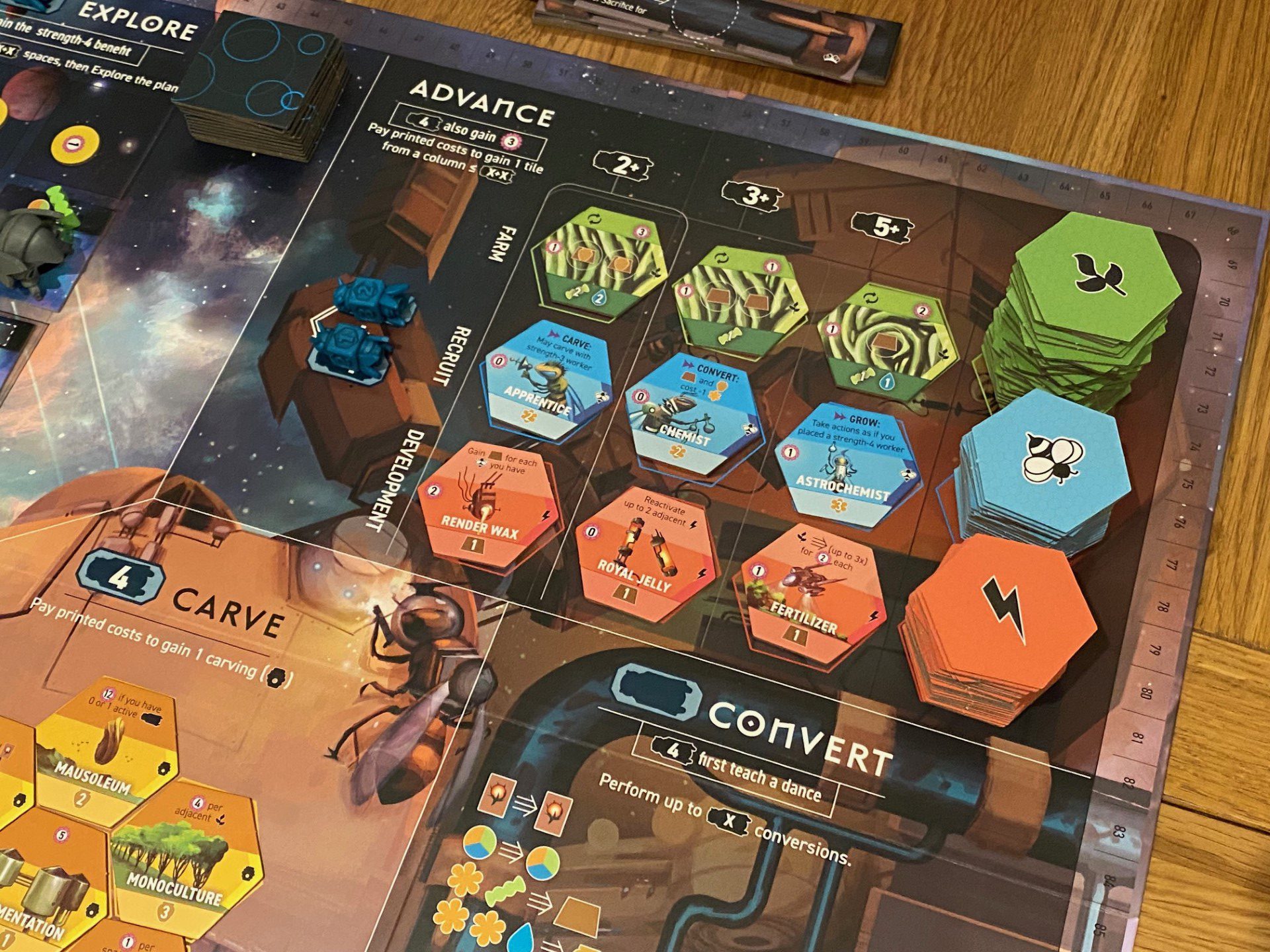
The basic premise of Apiary is a simple one — score as many points as possible. But how best to do this is where the complexity comes in. Each player will begin the game with a hive mat and a faction tile, each of which will offer some opportunity for points (there are five different hive mats and over 20 faction tiles), but beyond that, the players will need to develop their strategies.
The two best ways to do this are by using the Carve action to add a scoring tile to your faction mat, and by planting a seed card for its scoring side — but you won’t be able to do either of these things until you have a level four bee, and after a level four bee takes its action? It “hibernates” and leaves your hive meaning that you need to replace it.
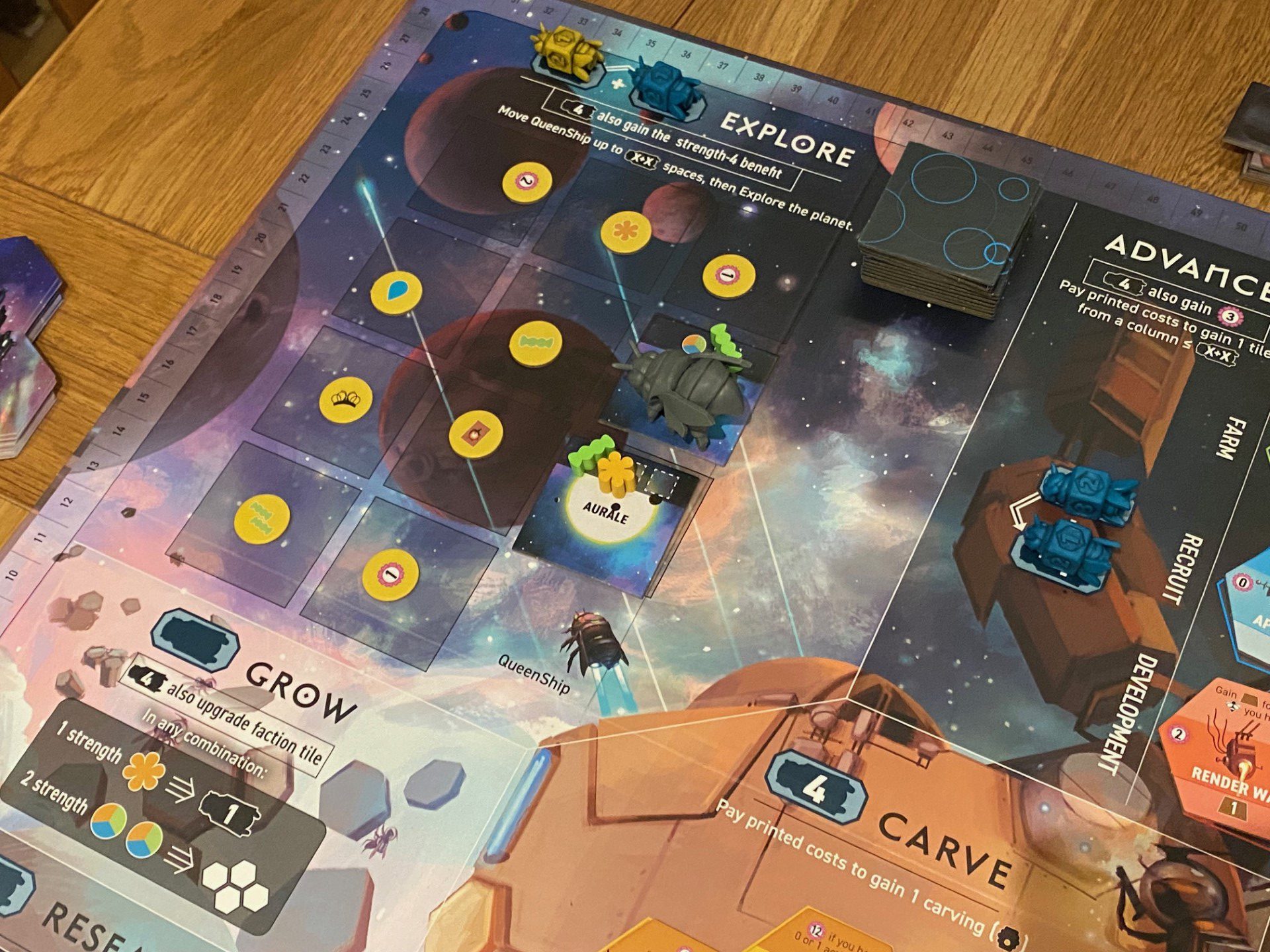
Taking a step back — this is the beautiful puzzle of Apiary. You begin the game (usually) with two bees at level one, and one at level two, and by taking actions on the board these bees will gain experience and ultimately build up to level four. Only then can actions like Carving or Planting be taken, but once a level four bee takes an action, it is gone for good.
There’s a natural flow to Apiary once it gets going, and the worker placement system is clever and often feels more collaborative than competitive. There are two kinds of turns in Apiary — placement turns and retrieval turns. On a placement turn, you just place a bee and then take the action. More often than not, the “age” of the bee denotes the strength of the action, so for example, if you use a level three bee on the Explore action, you’ll be able to move the Queen ship by three spaces.
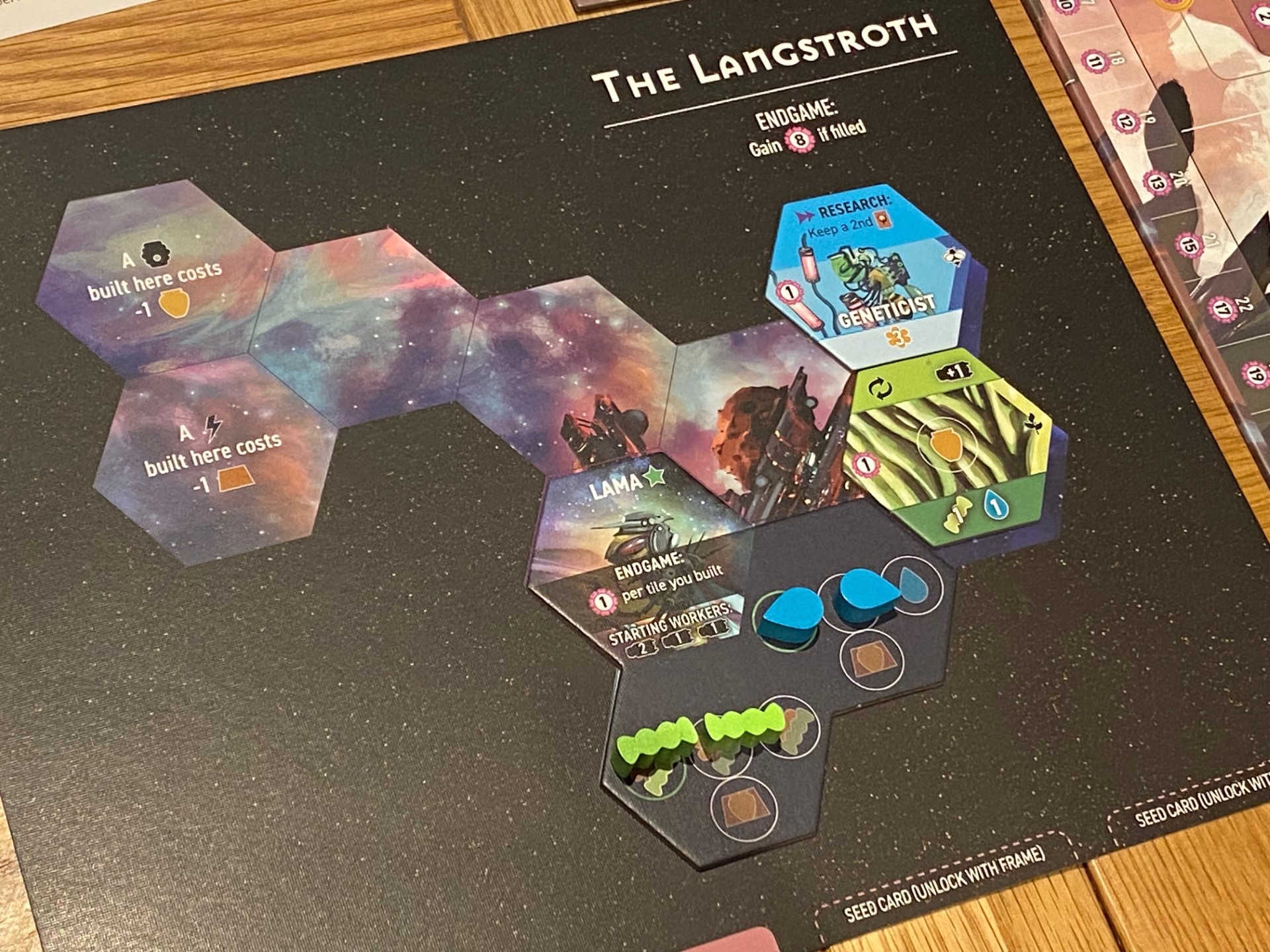
When another bee (whether yours or that of someone else) is used to take the same action, it will bump any existing bees there along the action spaces — and this may cause the last bee in line to be bumped off the board. When this happens, a player must return the “bumped” bee to their board and either roll it over to the next level up (at which point it can be used again) or put it into the docking bay, where it will retain its current level and wait for that player to take their next retrieval turn.
Actions include exploring (by moving the Queen bee and taking resources from the planet it lands on), converting (swapping basic resources or upgrading them to better resources), researching (drawing seed cards), growing (adding new bees or expanding your hive) and advancing (adding new farms, specialists and developments to your hive). There’s also Carving which I have already mentioned, and every action has a special bonus for level four bees that visit. My personal favourite is the convert action bonus, which allows players to teach other bees a Waggle Dance, which adds a completely unique action to the board for others to use.
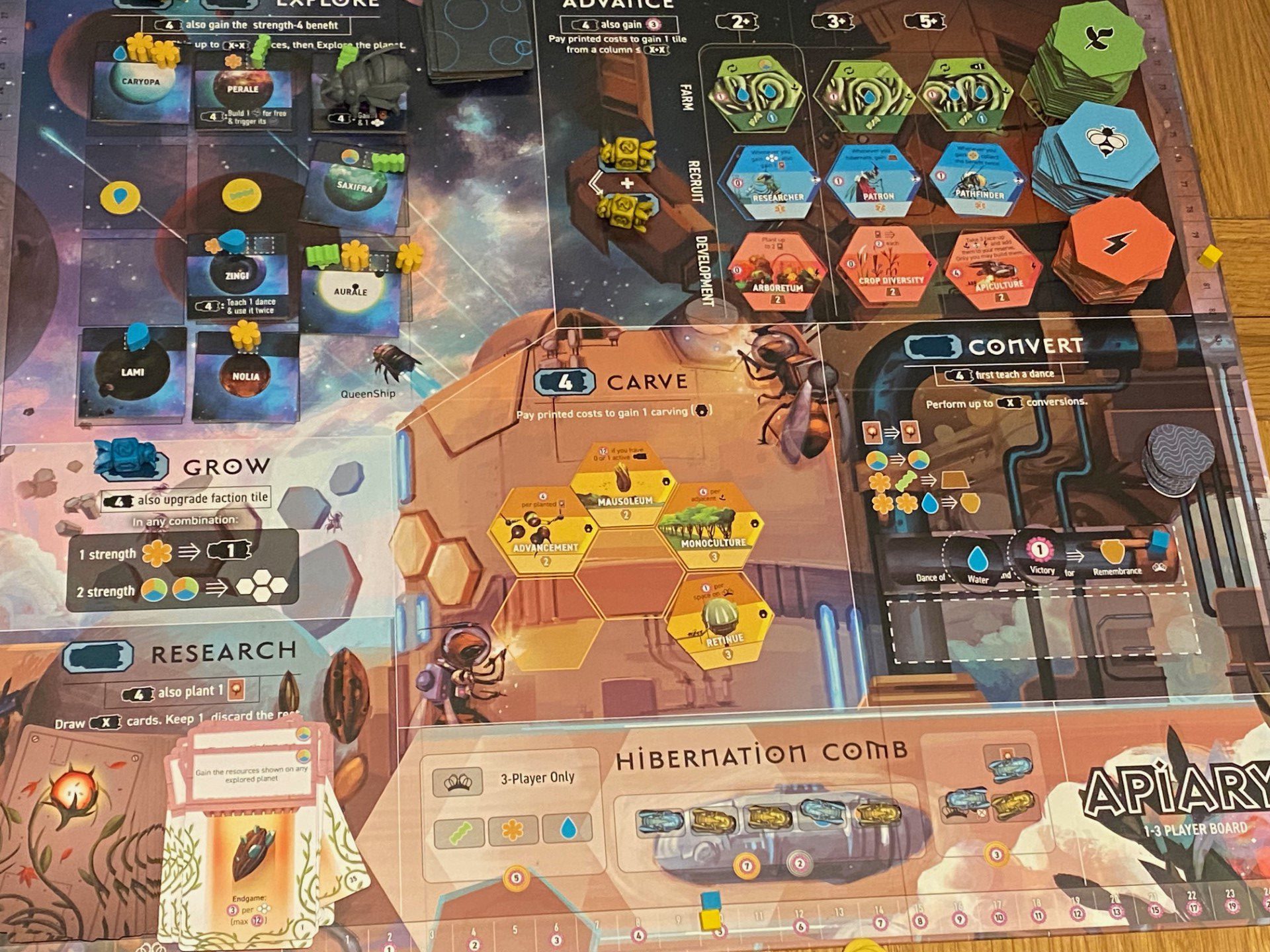
If all your bees are on the board (which typically only happens two or three times a game due to bumping) or you want to retrieve for any reason, you can take a retrieval turn. When this happens all bees come back to your board and roll over to the next level, before being made available for use on the next turn. When returned in this way, a player may also activate one farm for each of their bees — and this may generate resources, points or the queen’s favour (which is a separate track that also scores end-game points).
Adding a bumping mechanic makes Apiary feel like the game is always worth watching — there’s no end of round or cleanup, it’s just one player turn to flow into another — and I love it. In the mid to late game, you may want to place a bee here or there – but you will look carefully at which bee will be bumped and what impact it might have. Will you be flipping an opponent’s bee to level four? Will you be bumping a level four bee off the board and retiring it?
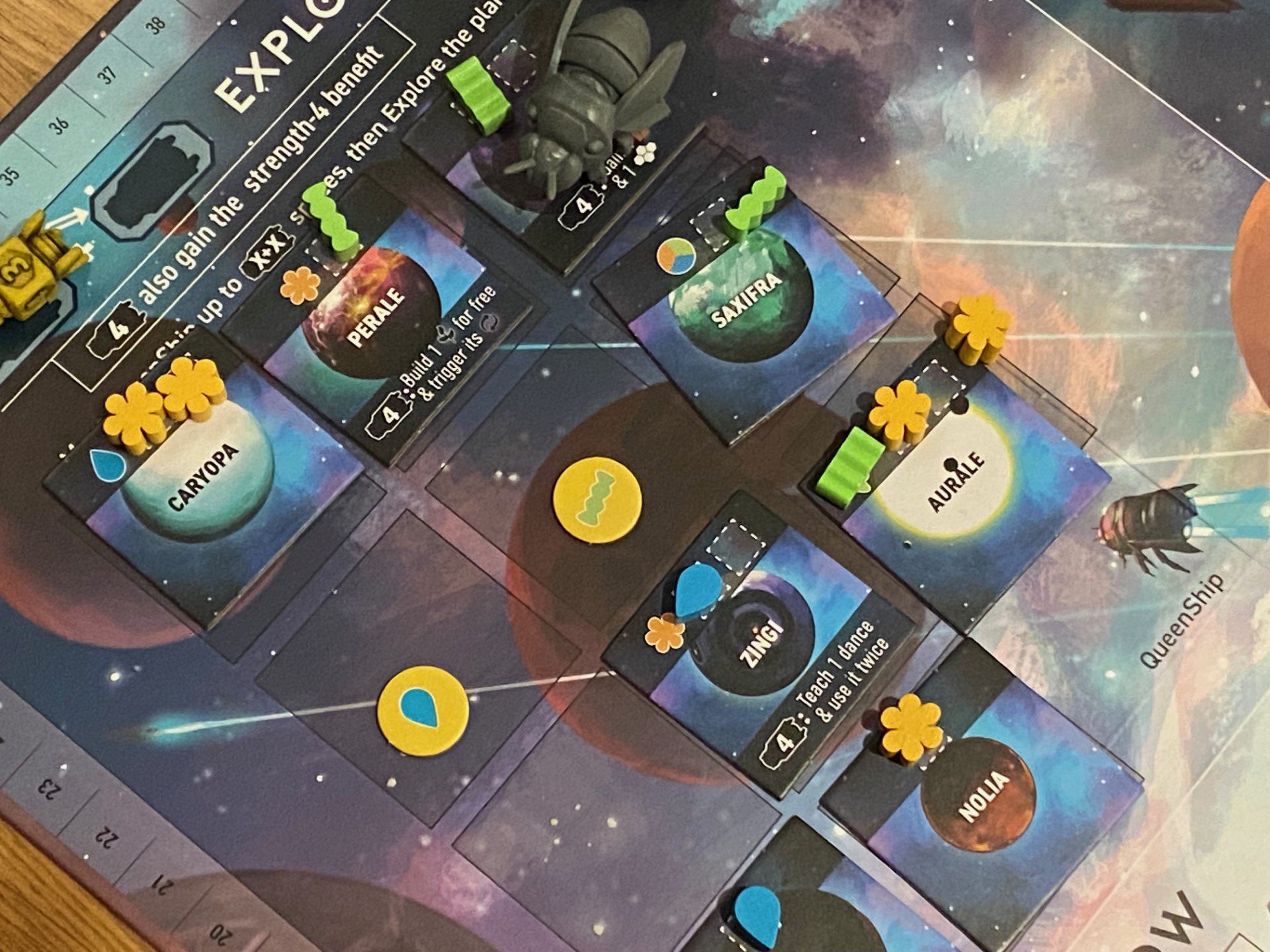
And here’s another genius feature — when a level four bee does retire and goes into hibernation, yes, it is lost as a worker piece, but it transforms into a hibernation pod and goes on the board to cover one of the pod spaces instead. The clever bit is that the end game is triggered by covering these spaces, and each one has a bonus as well as a chance to score end-game points (via majority).
I just love this system — you don’t want to lose powerful bees, but at some point in every game there will be a flurry of bees going to hibernate and everyone looks at that part of the board and realises that they must exert some control there. This galvanises the thought process around bumping bees belonging to other players!
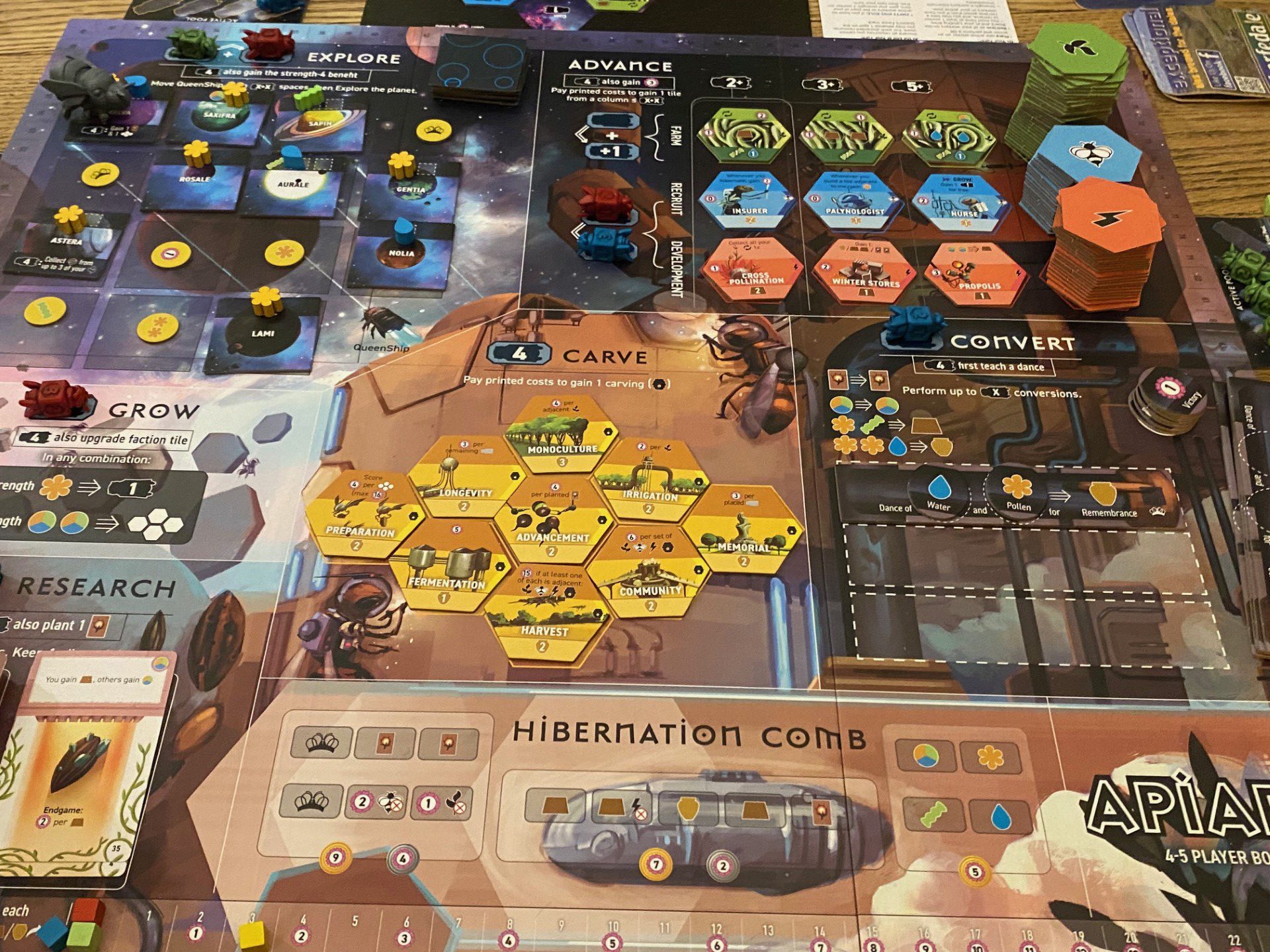
Apiary strikes an excellent balance between mechanical simplicity and very, very deep strategic gameplay. You cannot master Apiary in one, two or even five games, and there is never an obvious “best” choice in terms of point scoring (seed cards, carving, building out your board) and honestly, I have seen people win with all combinations of the above. I don’t love the “space bees” theme, but in the absence of a better suggestion, it seems to work and has certainly allowed legendary artist Kwanchai Moriya to create something unique and compelling to look at.
Consider Apiary as a game for a group of core gamers who have access to a consistent group that will play the same game repeatedly and it will shine. Alternatively, Apiary would make an excellent game for someone who has the time and patience to teach a less experienced but willing group — I can’t think of many other games that capture the essence of modern board games so well, whilst demonstrating both accessibility and deeper, long-term thinking.
You can purchase Apiary on Amazon.
Comments are closed.